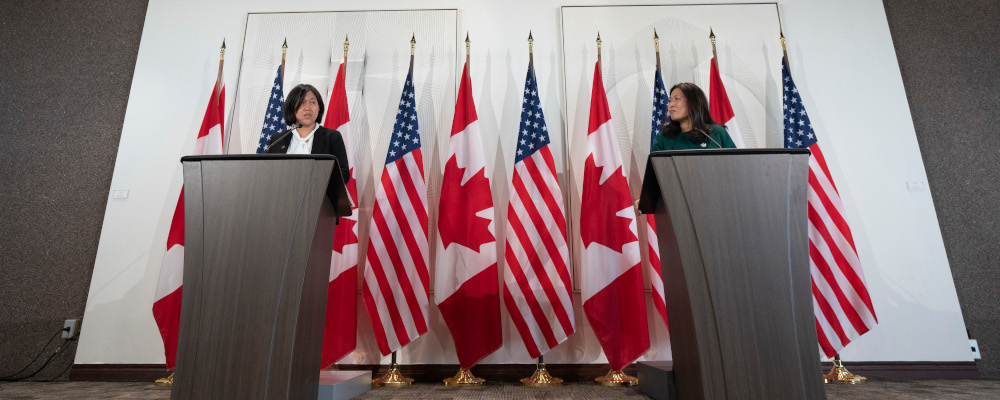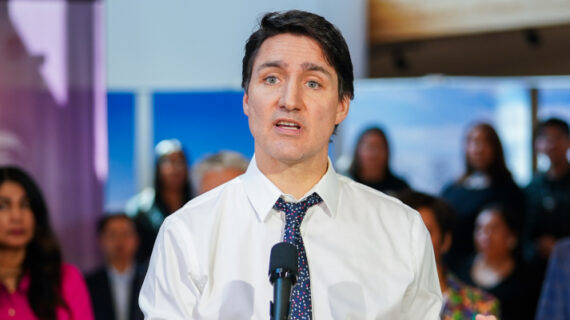For decades, back to at least when Pierre Trudeau was prime minister, the federal government has tried to diversify Canada’s trade exports and reduce our reliance on the U.S. market. And yet, the share of exports to the United States has remained virtually unchanged.
Now, in Ottawa’s latest attempt, the Justin Trudeau government has launched the Indo-Pacific Strategy (IPS) meant to increase Canada’s exports (particularly clean energy products) to India, Korea, Japan, China, and other Asian countries. The initiative includes government subsidies for small and medium-sized Canadian businesses pursuing new trade and investment opportunities in the Indo-Pacific region. The government will also establish a trade gateway and “Agri-Food” office in Southeast Asia, appoint a new Indo-Pacific trade representative, and launch “Team Canada” trade missions.
What’s behind this latest Ottawa-led attempt at export diversity?
Simply put, analysts expect that real economic growth in the Asia-Pacific region will exceed that of the U.S. in the foreseeable future, and that the U.S. enjoys leverage over Canada’s economic and political policies as a result of its dominant trade position.
However valid these justifications for trade diversification, a realistic appraisal of the IPS (and other such initiatives) should be highly skeptical of their benefit to the Canadian economy, let alone their success, because international trade is primarily “intra-regional” (i.e. trade within localized regions) rather than “inter-regional” trade among countries separated by greater distances. For example, the U.S. has consistently accounted for approximately 75 percent of Canada’s merchandise exports over the past three decades—again, notwithstanding various efforts by Ottawa to expand exports to Europe and Asia via various trade agreements with countries in those regions.
Trade is primarily intra-regional largely because of the importance of physical and cultural distance, and similarities of language, laws, regulations, and business practices. In inter-regional trade, there are greater differences in these factors. As a consequence, the cost of doing business is typically lower for intra-regional trade compared to inter-regional trade. Moreover, COVID-related supply chain disruptions have encouraged multinational companies to shorten their geographical supply chains by sourcing more of their inputs from local suppliers thereby boosting intra-regional trade.
In addition to the intrinsic challenges of trade overseas, the current political tension between Canada and China will likely further limit the success of the IPS. This situation along with the growing economic and military rivalry between China and Canada’s Western allies make it very difficult for Canadian companies to integrate into supply chains in the Indo-Pacific region, which will remain dominated by Chinese companies for the foreseeable future. And the virtual breakdown of diplomatic relations between Canada and India also seriously diminishes Canada’s future export opportunities in India.
Against this background, it’s crucially important to the future health of Canada’s economy that Canadian trade representatives propose bold new trade initiatives that address current bilateral trade irritants and open new trade opportunities with the U.S. The upcoming trilateral review of the Canada-U.S.-Mexico (CUSMA) trade agreement scheduled for 2026 may be the last best opportunity for Canada to establish a major new direction for that bilateral trade relationship.

Indeed, beyond addressing long-standing bilateral trade problems such as Canadian tariffs on U.S. dairy exports and U.S. tariffs and import limitations on a range of manufactured Canadian exports (including softwood lumber, steel, and aluminum), Canadian policymakers should promote freer trade in digital services. Services such as education, health care, financial management, and consulting are increasingly being digitized and delivered electronically, and the proliferation of artificial intelligence platforms will dramatically increase the scope and value of digital services and create a major new source of economic gains from bilateral trade.
To date, the Trudeau government’s focus on digital services has arguably been to extract direct and indirect tax revenue from U.S.-based companies such as Alphabet and Meta (in fact, Ottawa’s digital services tax, which goes into effect on Jan. 1, 2024, will be retroactive to 2022). This digital services tax, and the application of Canadian content rules to all streaming services, threaten not only to derail any broadening of the CUSMA to digital services but also jeopardize the renewal of the entire agreement.
It’s time for Canadian government officials to have faith in the ability of Canadian companies, including producers of cultural content, to thrive in a free trade environment for digital services and to put forward a bold new trade agenda for U.S. trade representatives to consider.




